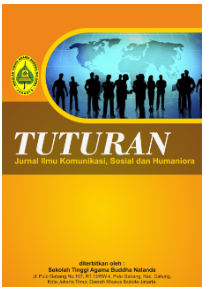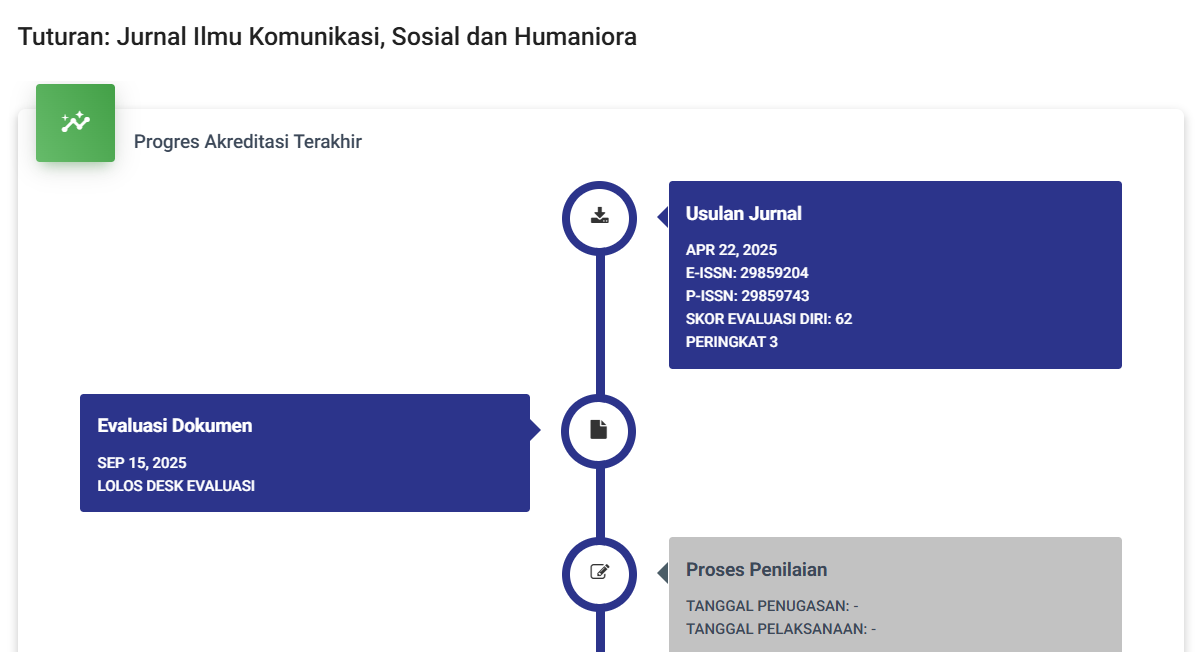Peran Feminisme dalam Strategi Komunikasi Akun Instagram @evtessia
DOI:
https://doi.org/10.47861/tuturan.v3i2.1669Keywords:
Feminism, Communication, Instagram, Digital TechnologyAbstract
In the midst of the ever-increasing digital wave, social media has revolutionised the way we communicate, spread ideas and voice our aspirations. Instagram, as one of the leading platforms, is not only a platform for visual expression, but also a strategic arena to spread deep social values. Among them, feminism, as a movement that promotes women's justice and empowerment, finds space to flourish and interact with millions of users around the world. The purpose of this study is to examine the role of feminism in the communication strategy of @evtessia's Instagram account. Using a qualitative approach and content analysis method, this research examines how feminist values are incorporated in the visual and narrative content published by the account. Data was collected by observing the interaction between content uploaded over the past six months with the account and followers. The results of the analysis show that @evtessia consistently translates messages of female consent, gender-specific justice and critique of patriarchy through the use of symbols, colours and texts that reflect a feminist perspective. In addition, the communication strategies implemented also create spatial interactions that support key dialogues on gender equality issues, creating a solid community on the social media platform. The findings are expected to help us understand the role of social media as a tool to support social change and to enhance feminism in the digital age.
References
Banet-Weiser, S. (2018). Empowered: Popular feminism and popular misogyny. Duke University Press.
Bruns, A., & Burgess, J. (2015). Twitter hashtags from ad hoc to calculated publics. In N. Rambukkana (Ed.), Hashtag publics (pp. 13–28). Peter Lang.
Chouliaraki, L. (2010). Post-humanitarianism: Humanitarian communication beyond a politics of pity. International Journal of Cultural Studies, 13(2), 107–126. https://doi.org/10.1177/1367877909356720
Gill, R. (2007). Gender and the media. Polity Press.
Gill, R. (2007). Postfeminist media culture: Elements of a sensibility. European Journal of Cultural Studies, 10(2), 147–166. https://doi.org/10.1177/1367549407075898
Hooks, b. (2000). Feminism is for everybody: Passionate politics. South End Press.
Jenkins, H. (2006). Convergence culture: Where old and new media collide. New York University Press.
Keller, J., & Ringrose, J. (2015). ‘But then feminism goes out the window!’: Exploring teenage girls’ critical response to representations of gender in advertising. Journal of Youth Studies, 18(6), 736–751. https://doi.org/10.1080/13676261.2014.992323
Lazard, L., & Atkinson, S. (2015). Putting the ‘informed’ into ‘consent’: A matter of plain language. Health Expectations, 18(4), 1191–1202. https://doi.org/10.1111/hex.12093
Marwick, A., & boyd, d. (2011). To see and be seen: Celebrity practice on Twitter. Convergence, 17(2), 139–158. https://doi.org/10.1177/1354856510394539
Mendes, K., Ringrose, J., & Keller, J. (2019). Digital feminist activism: Girls and women fight back against rape culture. Oxford University Press.
Milan, S. (2015). From social movements to cloud protesting: The evolution of collective identity. Information, Communication & Society, 18(8), 887–900. https://doi.org/10.1080/1369118X.2014.998138
Downloads
Published
How to Cite
Issue
Section
License
Copyright (c) 2025 TUTURAN: Jurnal Ilmu Komunikasi, Sosial dan Humaniora

This work is licensed under a Creative Commons Attribution-ShareAlike 4.0 International License.








